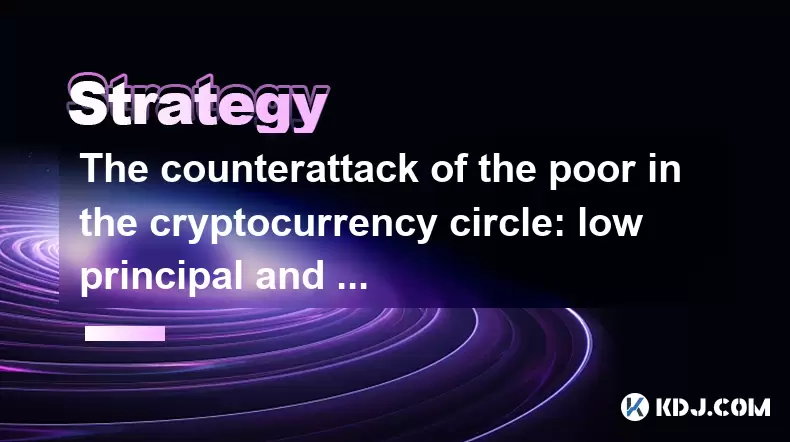-
 Bitcoin
Bitcoin $118300
-0.58% -
 Ethereum
Ethereum $3825
0.11% -
 XRP
XRP $3.137
-0.71% -
 Tether USDt
Tether USDt $0.9999
-0.01% -
 BNB
BNB $803.9
-3.37% -
 Solana
Solana $181.5
-1.94% -
 USDC
USDC $0.9999
0.01% -
 Dogecoin
Dogecoin $0.2238
-2.51% -
 TRON
TRON $0.3358
2.12% -
 Cardano
Cardano $0.7844
-2.16% -
 Hyperliquid
Hyperliquid $43.31
-1.48% -
 Sui
Sui $3.807
-4.04% -
 Stellar
Stellar $0.4203
-1.96% -
 Chainlink
Chainlink $17.79
-3.00% -
 Bitcoin Cash
Bitcoin Cash $567.8
-1.34% -
 Hedera
Hedera $0.2614
-4.30% -
 Avalanche
Avalanche $24.19
-4.46% -
 Litecoin
Litecoin $109.2
-0.74% -
 UNUS SED LEO
UNUS SED LEO $8.969
-0.01% -
 Toncoin
Toncoin $3.404
3.97% -
 Ethena USDe
Ethena USDe $1.001
-0.01% -
 Shiba Inu
Shiba Inu $0.00001307
-3.19% -
 Uniswap
Uniswap $10.33
-1.23% -
 Polkadot
Polkadot $3.884
-4.06% -
 Monero
Monero $312.9
-1.87% -
 Dai
Dai $1.000
0.01% -
 Bitget Token
Bitget Token $4.537
-2.24% -
 Pepe
Pepe $0.00001156
-3.40% -
 Cronos
Cronos $0.1437
-0.89% -
 Aave
Aave $282.8
-2.77%
The counterattack of the poor in the cryptocurrency circle: low principal and high leverage to make huge profits
Low principal and high leverage trading allows those with limited funds to enter the crypto market and potentially achieve huge profits, but it comes with significant risks.
Jun 12, 2025 at 10:28 pm

The cryptocurrency market has long been seen as a playground for the wealthy, with high entry barriers and significant capital requirements. However, a new trend is emerging that challenges this notion: low principal and high leverage trading. This strategy is becoming increasingly popular among those with limited funds, allowing them to participate in the market and potentially achieve huge profits. In this article, we will explore how individuals with limited resources are using high leverage to counterattack the traditional dynamics of the cryptocurrency circle.
Understanding Low Principal and High Leverage
Low principal refers to the small amount of capital that an individual starts with when entering the cryptocurrency market. This could be as little as a few hundred dollars. High leverage, on the other hand, refers to the use of borrowed funds to increase the potential return on investment. In the crypto world, leverage can often reach levels of 100x or more, meaning that for every dollar invested, traders can control a position worth up to 100 times that amount.
The combination of low principal and high leverage allows traders to amplify their potential gains significantly. For example, a trader starting with $100 and using 100x leverage can control a position worth $10,000. If the market moves in their favor by just 1%, they could potentially double their initial investment.
The Mechanics of High Leverage Trading
To understand how high leverage trading works, it's important to delve into the mechanics behind it. Most cryptocurrency exchanges offer leverage through a feature known as margin trading. Here's how it typically works:
- Open a Margin Account: Traders first need to open a margin account on a platform that supports leverage trading. This account allows them to borrow funds from the exchange to increase their trading position.
- Deposit Collateral: To use leverage, traders must deposit a certain amount of cryptocurrency or fiat currency as collateral. This collateral acts as a security deposit and can be liquidated if the trade goes against the trader.
- Choose Leverage Level: Traders can select the level of leverage they want to use, typically ranging from 2x to 100x or even higher on some platforms.
- Execute the Trade: Once the leverage is set, traders can execute their trade, buying or selling the cryptocurrency with the amplified position size.
- Monitor and Close the Position: Traders must closely monitor their positions, as high leverage can lead to rapid gains or losses. They can close their positions at any time to realize profits or cut losses.
Risks and Rewards of High Leverage Trading
While high leverage trading offers the potential for huge profits, it also comes with significant risks. The same amplification that can turn small gains into substantial profits can also turn small losses into devastating ones. For example, a 1% move against a 100x leveraged position can result in a total loss of the initial investment.
The key to successful high leverage trading is risk management. Traders must set strict stop-loss orders to limit potential losses and should never risk more than they can afford to lose. Additionally, understanding market trends and having a solid trading strategy can help mitigate some of the risks associated with high leverage.
Success Stories of Low Principal, High Leverage Traders
There are numerous stories of individuals who have used low principal and high leverage to achieve significant success in the cryptocurrency market. One such example is a trader who started with just $500 and used 50x leverage to turn that into $25,000 in a matter of weeks. Another trader began with $100 and, through careful analysis and disciplined trading, managed to grow their account to over $10,000 using 100x leverage.
These success stories highlight the potential of high leverage trading but also underscore the importance of education and discipline. Without a deep understanding of the market and a disciplined approach to trading, the risks of high leverage can quickly outweigh the rewards.
Choosing the Right Platform for High Leverage Trading
Selecting the right platform is crucial for those looking to engage in high leverage trading. Here are some factors to consider when choosing a platform:
- Reputation and Security: Ensure the platform has a solid reputation and robust security measures to protect your funds.
- Leverage Options: Look for platforms that offer a wide range of leverage options, allowing you to choose the level that best suits your trading strategy.
- Fees and Costs: Understand the fees associated with margin trading, as these can eat into your profits.
- User Interface and Tools: A user-friendly interface and advanced trading tools can make a significant difference in your trading experience.
Some popular platforms for high leverage trading include Binance, Bybit, and FTX. Each of these platforms offers different features and leverage options, so it's essential to research and choose the one that best fits your needs.
Strategies for Successful High Leverage Trading
To maximize the potential of low principal and high leverage trading, it's essential to develop and follow a solid trading strategy. Here are some strategies that can help traders succeed:
- Trend Following: Identify and follow market trends, using technical analysis to enter and exit positions at the right times.
- Scalping: Focus on making small, frequent profits by taking advantage of short-term market movements.
- Breakout Trading: Enter trades when the price breaks out of a defined range, often using high leverage to capitalize on the momentum.
- Risk Management: Always use stop-loss orders and never risk more than a small percentage of your trading capital on any single trade.
By combining these strategies with a disciplined approach to trading, individuals with limited funds can increase their chances of success in the high-stakes world of high leverage cryptocurrency trading.
Frequently Asked Questions
Q: Is high leverage trading suitable for beginners?
A: High leverage trading is generally not recommended for beginners due to the high level of risk involved. It requires a deep understanding of the market and a disciplined approach to risk management. Beginners should start with lower leverage and gradually increase it as they gain more experience and confidence.
Q: Can high leverage trading be profitable in a bear market?
A: Yes, high leverage trading can be profitable in a bear market, but it requires a different approach. Traders can use short selling to profit from falling prices, but they must be cautious, as the risks of high leverage are amplified in volatile markets.
Q: What is the minimum amount needed to start high leverage trading?
A: The minimum amount needed to start high leverage trading varies depending on the platform and the level of leverage. Some platforms allow traders to start with as little as $10, but it's important to have enough capital to cover potential losses and margin calls.
Q: How can I protect my funds when using high leverage?
A: To protect your funds when using high leverage, always use stop-loss orders, never risk more than you can afford to lose, and keep a close eye on your positions. Additionally, consider using a diversified portfolio to spread the risk across different assets.
Disclaimer:info@kdj.com
The information provided is not trading advice. kdj.com does not assume any responsibility for any investments made based on the information provided in this article. Cryptocurrencies are highly volatile and it is highly recommended that you invest with caution after thorough research!
If you believe that the content used on this website infringes your copyright, please contact us immediately (info@kdj.com) and we will delete it promptly.
- Ozak AI Presale: Your Chance to Turn 1 ETH into 20? A Crypto Investment Deep Dive
- 2025-07-30 15:50:12
- IPO, Bitcoin, and Treasury: A New Era of Crypto Investment?
- 2025-07-30 14:30:12
- Bitcoin, Binance, and Whales: Decoding the Latest Market Moves
- 2025-07-30 14:50:12
- Bitcoin, Binance, and Whales: Decoding the $1.2B Shuffle
- 2025-07-30 16:10:12
- MultiBank Group's $MBG Token: Bridging TradFi and Web3 with LBank Listing
- 2025-07-30 16:10:12
- NFTs: Punks, Penguins, and the Market's Mosh Pit
- 2025-07-30 16:16:00
Related knowledge

How to avoid common crypto investment mistakes?
Jul 13,2025 at 01:35am
Understanding the Risks of Crypto InvestmentInvesting in cryptocurrency can be highly rewarding, but it also comes with significant risks. One of the ...

What is a long-short crypto strategy?
Jul 15,2025 at 10:56am
Understanding the Basics of a Long-Short Crypto StrategyA long-short crypto strategy is an investment approach where traders simultaneously take long ...

What is a long-short crypto strategy?
Jul 11,2025 at 01:28pm
Understanding the Basics of Long-Short Crypto StrategyA long-short crypto strategy is an investment approach where traders take both long and short po...

How to use the RSI indicator for crypto?
Jul 12,2025 at 03:56pm
Understanding the RSI Indicator in Cryptocurrency TradingThe Relative Strength Index (RSI) is a momentum oscillator used to measure the speed and chan...

Is copy trading a good strategy for crypto beginners?
Jul 12,2025 at 08:28am
Understanding Copy Trading in the Cryptocurrency MarketCopy trading is a strategy where novice traders replicate the trades of experienced investors a...

How to build a crypto portfolio with $1000?
Jul 13,2025 at 08:14pm
Understanding the Basics of Cryptocurrency InvestmentBuilding a crypto portfolio with $1000 starts with understanding the fundamentals of cryptocurren...

How to avoid common crypto investment mistakes?
Jul 13,2025 at 01:35am
Understanding the Risks of Crypto InvestmentInvesting in cryptocurrency can be highly rewarding, but it also comes with significant risks. One of the ...

What is a long-short crypto strategy?
Jul 15,2025 at 10:56am
Understanding the Basics of a Long-Short Crypto StrategyA long-short crypto strategy is an investment approach where traders simultaneously take long ...

What is a long-short crypto strategy?
Jul 11,2025 at 01:28pm
Understanding the Basics of Long-Short Crypto StrategyA long-short crypto strategy is an investment approach where traders take both long and short po...

How to use the RSI indicator for crypto?
Jul 12,2025 at 03:56pm
Understanding the RSI Indicator in Cryptocurrency TradingThe Relative Strength Index (RSI) is a momentum oscillator used to measure the speed and chan...

Is copy trading a good strategy for crypto beginners?
Jul 12,2025 at 08:28am
Understanding Copy Trading in the Cryptocurrency MarketCopy trading is a strategy where novice traders replicate the trades of experienced investors a...

How to build a crypto portfolio with $1000?
Jul 13,2025 at 08:14pm
Understanding the Basics of Cryptocurrency InvestmentBuilding a crypto portfolio with $1000 starts with understanding the fundamentals of cryptocurren...
See all articles

























































































